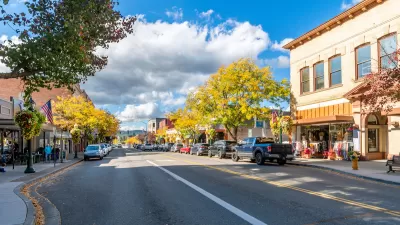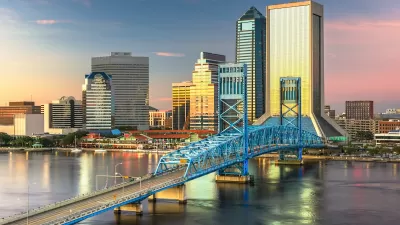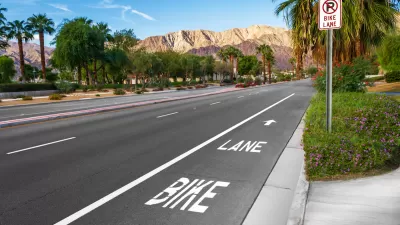With nearly half of U.S. road deaths occurring on rural roads, the Complete Streets approach offers a safer way forward, but few towns are taking it on.

In a piece in Smart Growth America, Abigail Araya reminds readers that Complete Streets and pedestrian infrastructure are not exclusively urban needs.
Araya quotes a recent SGA report that makes the case for a Complete Streets approach to rural roads as one way to reduce road deaths and build thriving, multimodal rural communities. According to the report, “as rural areas account for 49% of all traffic deaths (while only 19% of the population lives in these areas), decision makers must prioritize pedestrian design that put safety at the forefront.”
The report points out that of the 18 projects that received federal Rural Transportation Surface Grants for 2023–2024, just two included a Complete Streets approach. “However, while some pedestrian design features were tacked on to these projects, they ultimately follow the default approach to road design, prioritizing vehicle speed and throughput over the safety of other road users.”
The report concludes that a few piecemeal design components aimed at pedestrians and cyclists are not enough to end road deaths and create truly multimodal systems. “Following a Complete Streets approach means prioritizing the safety of all road users and designing for safety over speed.”
FULL STORY: What it means to follow a Complete Streets approach in rural America

Americans May Be Stuck — But Why?
Americans are moving a lot less than they once did, and that is a problem. While Yoni Applebaum, in his highly-publicized article Stuck, gets the reasons badly wrong, it's still important to ask: why are we moving so much less than before?

Study: Maui’s Plan to Convert Vacation Rentals to Long-Term Housing Could Cause Nearly $1 Billion Economic Loss
The plan would reduce visitor accommodation by 25,% resulting in 1,900 jobs lost.

Using Old Oil and Gas Wells for Green Energy Storage
Penn State researchers have found that repurposing abandoned oil and gas wells for geothermal-assisted compressed-air energy storage can boost efficiency, reduce environmental risks, and support clean energy and job transitions.

San Diego Swaps Parking Lane for Kid-Friendly Mini Park
The block-long greenway will feature interactive play equipment and landscaping.

Tracking the Invisible: Methane Leaks From LA’s Neighborhood Oil Sites
Environmental advocates are using infrared technology to monitor and document methane leaks from neighborhood oil sites, filling regulatory gaps and pushing for stronger protections to safeguard community health and the climate.

Montana Bill Promotes Parking Reform
A bill before the Montana state senate would bar cities from requiring more than one parking spot per new housing unit.
Urban Design for Planners 1: Software Tools
This six-course series explores essential urban design concepts using open source software and equips planners with the tools they need to participate fully in the urban design process.
Planning for Universal Design
Learn the tools for implementing Universal Design in planning regulations.
Caltrans
Heyer Gruel & Associates PA
Institute for Housing and Urban Development Studies (IHS)
City of Grandview
Harvard GSD Executive Education
Salt Lake City
NYU Wagner Graduate School of Public Service
City of Cambridge, Maryland





























